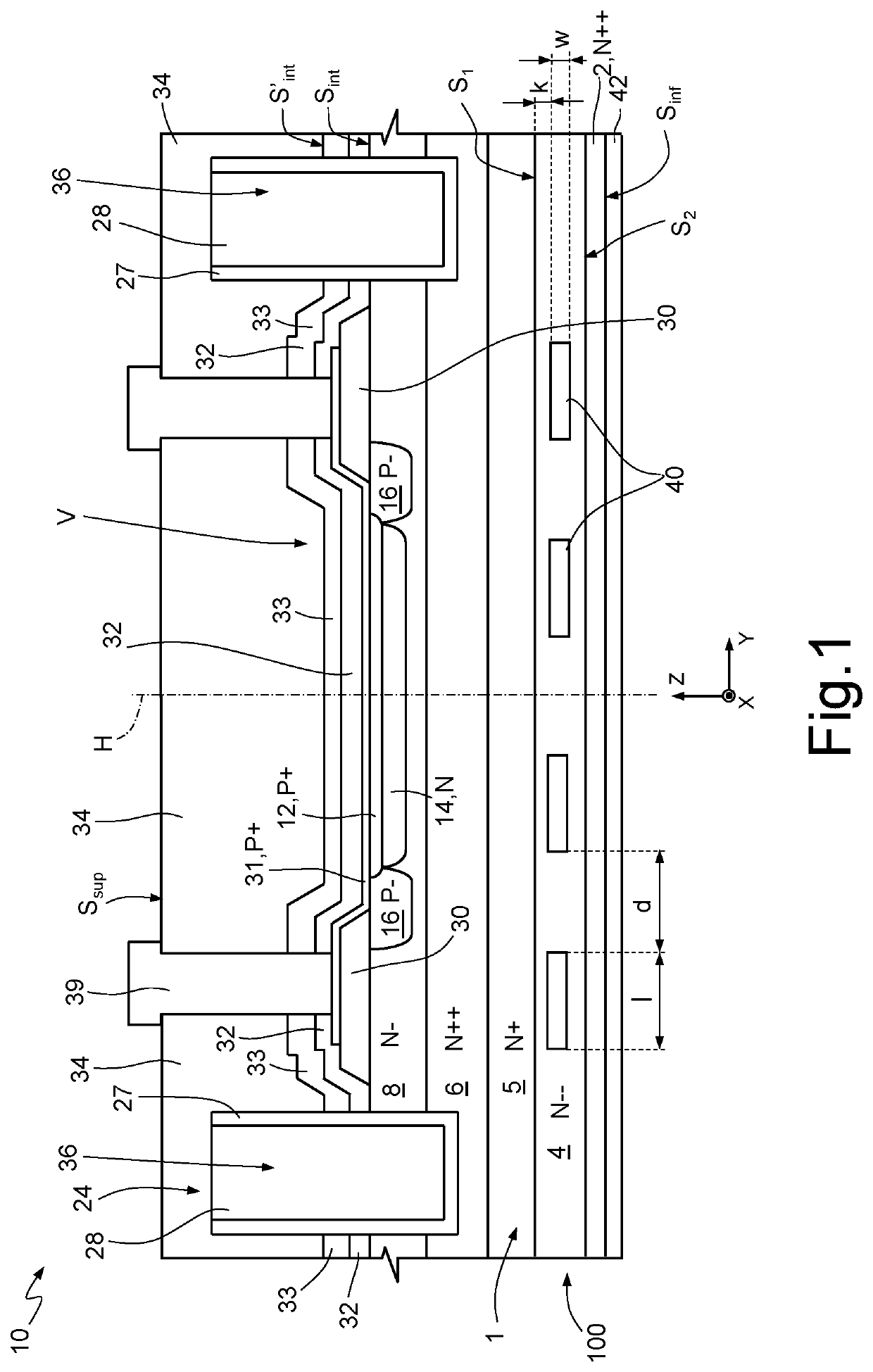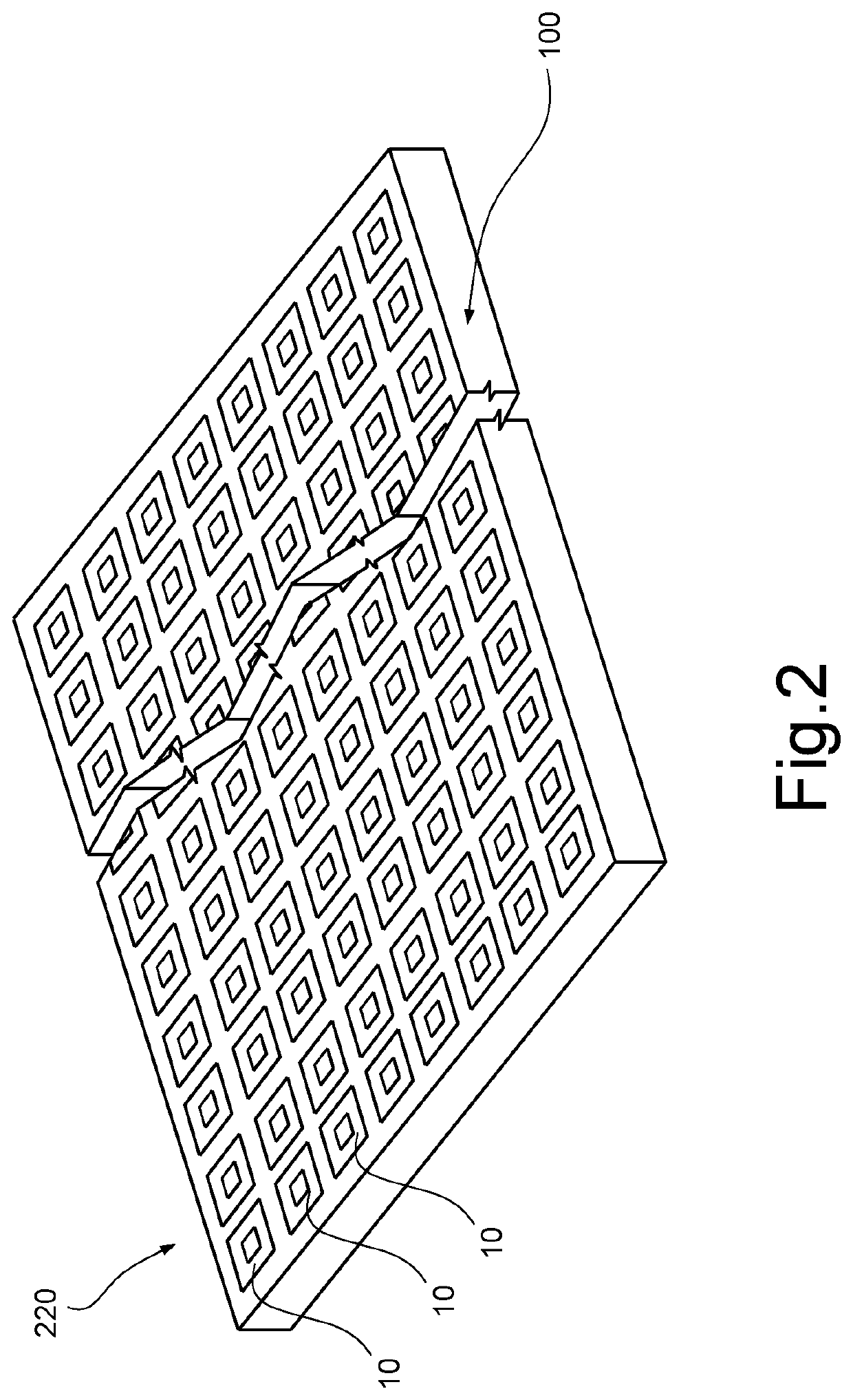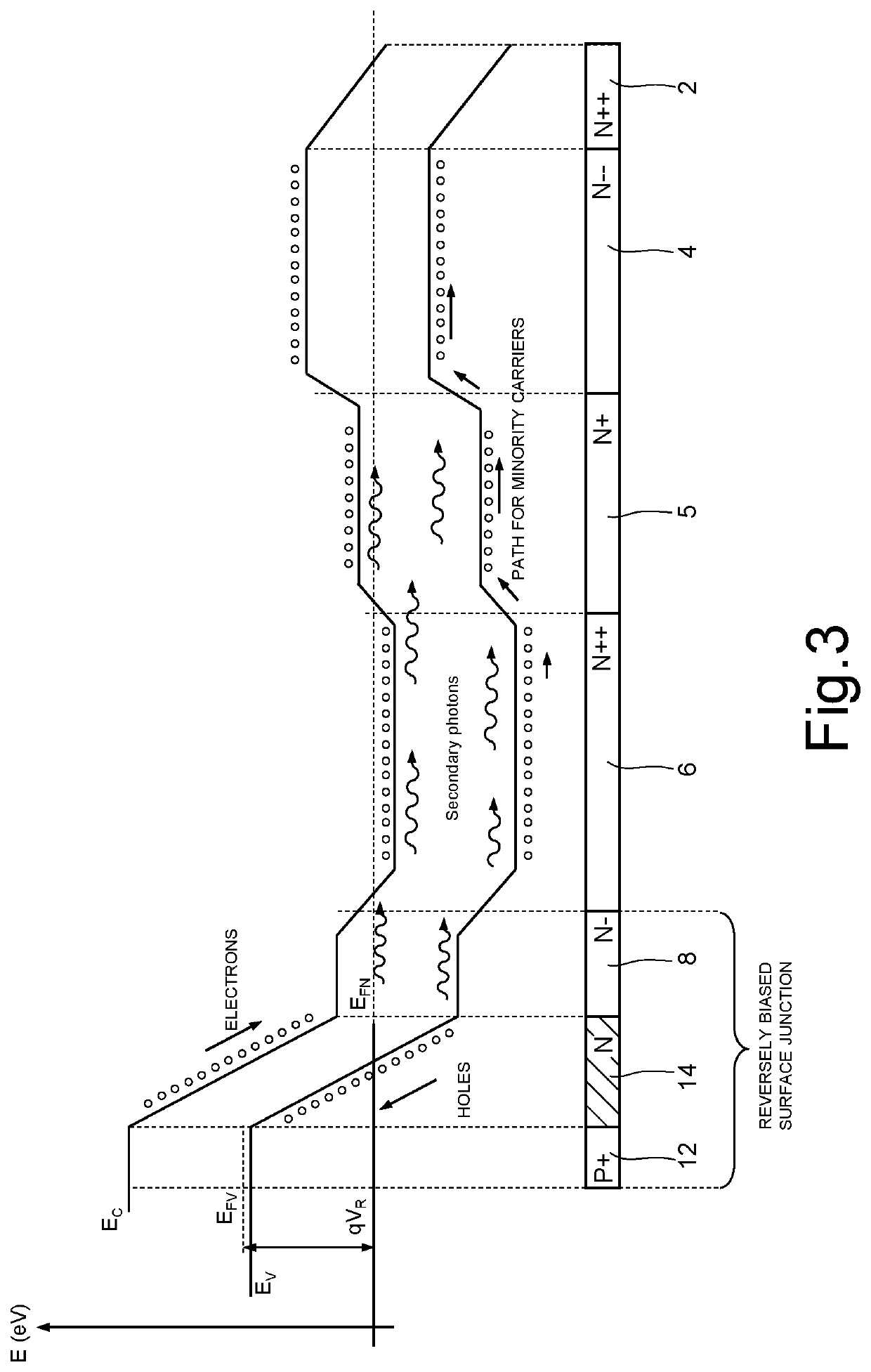Low noise geiger-mode avalanche photodiode and manufacturing process
a technology of avalanche and photodiode, which is applied in the direction of solid-state devices, electric devices, basic electric elements, etc., can solve the problems of increasing the so-called dark-noise rate, reducing the dynamics of the array, and long delays of the avalanche pulse thus generated
- Summary
- Abstract
- Description
- Claims
- Application Information
AI Technical Summary
Benefits of technology
Problems solved by technology
Method used
Image
Examples
Embodiment Construction
[0025]The present photodiode stems from some observations of the present applicant. In particular, the present applicant has noted how, in an array of SPADs, the likelihood of there being an occurring phenomena of afterpulsing and delayed crosstalk decreases the closer the junctions of the SPADs are to corresponding non-depleted semiconductor regions having large thicknesses and high doping levels. In other words, in this way, the lifetime of the aforementioned minority carriers is reduced.
[0026]This having been said, FIG. 1 shows a photodiode 10, which is integrated in a die 100 of semiconductor material. As shown in FIG. 2, the photodiode 10 may form part of an array 220 of photodiodes that are the same as one another, all of which are designated by 10.
[0027]In detail, the photodiode 10 comprises a semiconductor body 1, which is made, for example, of silicon and in turn comprises a substrate 4, and a first epitaxial layer 5, a second epitaxial layer 6, and a third epitaxial layer ...
PUM
 Login to View More
Login to View More Abstract
Description
Claims
Application Information
 Login to View More
Login to View More - R&D
- Intellectual Property
- Life Sciences
- Materials
- Tech Scout
- Unparalleled Data Quality
- Higher Quality Content
- 60% Fewer Hallucinations
Browse by: Latest US Patents, China's latest patents, Technical Efficacy Thesaurus, Application Domain, Technology Topic, Popular Technical Reports.
© 2025 PatSnap. All rights reserved.Legal|Privacy policy|Modern Slavery Act Transparency Statement|Sitemap|About US| Contact US: help@patsnap.com



